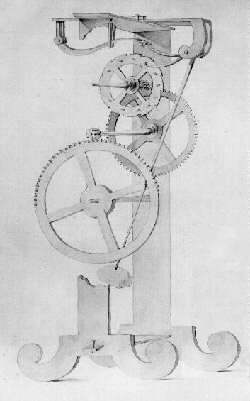Galileo_Pendulum_Clock.jpg (250 × 401 pixels, file size: 14 KB, MIME type: image/jpeg)
File history
Click on a date/time to view the file as it appeared at that time.
| Date/Time | Thumbnail | Dimensions | User | Comment | |
|---|---|---|---|---|---|
| current | 15:43, 3 May 2021 |  | 250 × 401 (14 KB) | Materialscientist | tidied |
| 10:53, 22 November 2007 |  | 250 × 401 (11 KB) | Chetvorno | {{Information |Description=Drawing of pendulum clock designed by Galileo Galilei around 1641. Although the source says the drawing is 'by' Galileo, it is undoubtedly the one drawn by his student Vincenzo Viviani in 1659, since Galileo was blind by the ti |
File usage
The following pages on the English Wikipedia use this file (pages on other projects are not listed):
Global file usage
The following other wikis use this file:
- Usage on bg.wikipedia.org
- Usage on bn.wikipedia.org
- Usage on ca.wikipedia.org
- Usage on eo.wikipedia.org
- Usage on es.wikipedia.org
- Usage on gl.wikipedia.org
- Usage on he.wikipedia.org
- Usage on hr.wikipedia.org
- Usage on ja.wikipedia.org
- Usage on ms.wikipedia.org
- Usage on ru.wikipedia.org
- Usage on sh.wikipedia.org
- Usage on simple.wikipedia.org
- Usage on vi.wikipedia.org
- Usage on war.wikipedia.org
- Usage on zh.wikipedia.org

